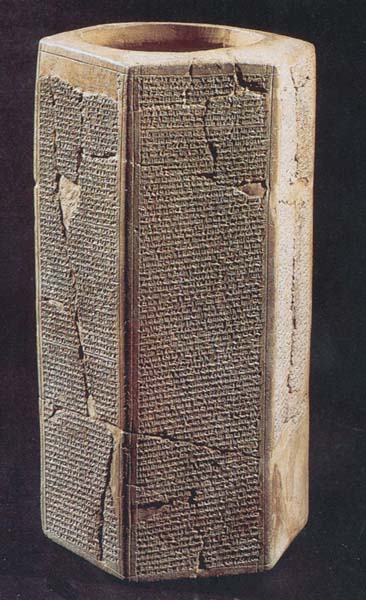Image Details

Erich Lessing
Written records left by the Assyrian kings supplement and corroborate the brutality depicted in the reliefs that decorated their palaces. These records, written in a wedge-shaped script called cuneiform, have been preserved primarily in three forms: prisms, cylinders and tablets made of clay or alabaster. One of the most famous Assyrian prisms contains the annals of Sennacherib. Among the events crowded onto the six faces of this 15-inch-high, clay prism is a boastful account of Sennacherib’s destruction of Judah in 701 B.C. Inscribed in about 691 B.C., the account says in part: “Forty-six of [Hezekiah’s] strong walled towns and innumerable smaller villages … I besieged and conquered … . As for Hezekiah, the awful splendor of my lordship overwhelmed him.”
